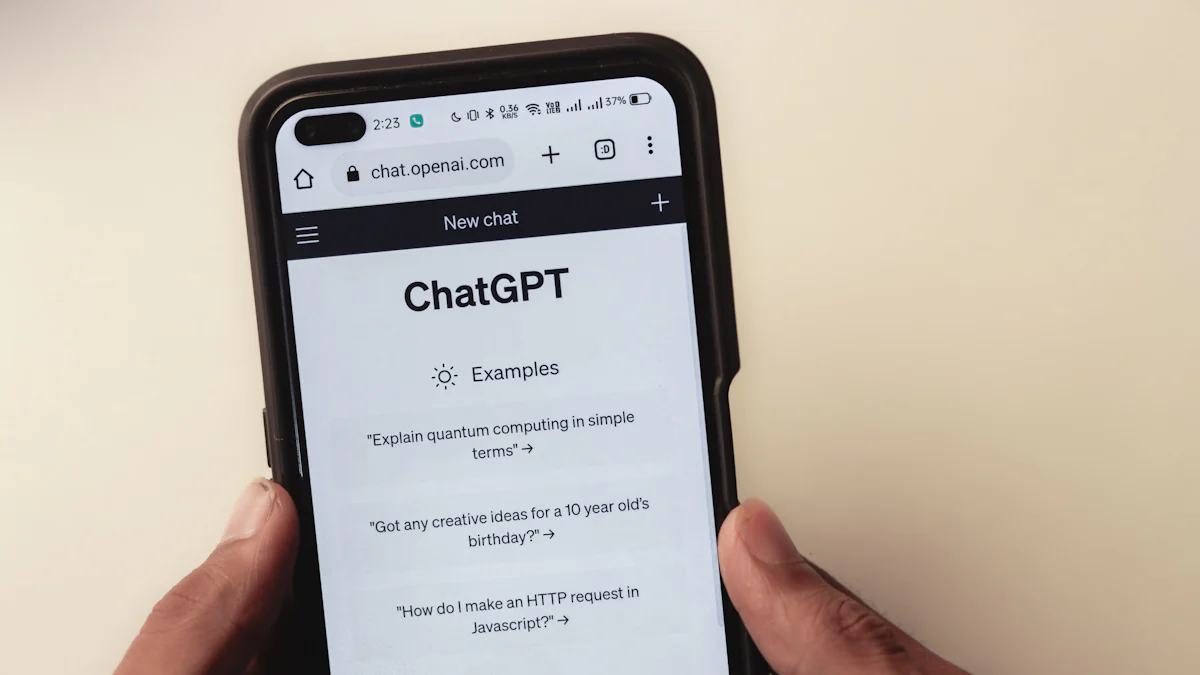Comparative Analysis of ChatSonic and ChatGPT: Which One Is Right for You?

Chat Platforms Overview
In this comparative analysis, we will explore the features and capabilities of ChatSonic and ChatGPT. By providing an informative comparison, we aim to assist you in determining which platform is best suited for your needs.
Both ChatSonic and ChatGPT offer unique features and functionalities that cater to different requirements.
Understanding the differences between these platforms will enable you to make an informed decision based on your specific use case.
By delving into the details of each platform, we will uncover the distinct advantages and applications of ChatSonic and ChatGPT, allowing you to choose the right one for your individual or business needs.
NLP Techniques
Understanding Natural Language Processing
Natural Language Processing (NLP) techniques play a pivotal role in the functionality of chat platforms. These techniques enable the platforms to comprehend and interpret human language, allowing for seamless interactions between users and chatbots.
By utilizing NLP, chat platforms can understand the intent behind user messages, identify key information, and generate appropriate responses. This significantly enhances the user experience by providing accurate and relevant interactions.
NLP techniques encompass various processes such as text tokenization, part-of-speech tagging, named entity recognition, and sentiment analysis. These processes collectively contribute to the platforms' ability to understand, process, and respond to natural language inputs effectively.
NLP Advancements
Recent advancements in NLP have revolutionized chat platforms by improving the accuracy and contextual understanding of conversations. With advancements in machine learning and deep learning algorithms, chat platforms can now offer more contextually relevant responses based on user inputs.
These advancements have also enhanced the capabilities of chatbots to engage in more natural and meaningful conversations with users. Through improved language understanding and context retention, NLP has elevated the overall quality of interactions within chat platforms.
Conversational AI Learning
Machine Learning in Conversational AI
In the realm of conversational AI, machine learning plays a fundamental role in the development and enhancement of chatbot capabilities. By leveraging machine learning algorithms, conversational AI systems can continuously improve and adapt based on user interactions.
Machine learning enables chatbots to analyze vast amounts of conversational data, allowing them to understand user intents more accurately. This leads to enhanced chatbot performance as they become adept at providing relevant and contextually appropriate responses to user queries.
The iterative nature of machine learning empowers chatbots to learn from each interaction, refining their language understanding and response generation over time. This adaptive learning process ensures that chatbots can effectively cater to diverse user queries and evolving language patterns.
AI Learning Models
Conversational AI utilizes various learning models to enhance chatbot intelligence and responsiveness. These models encompass a range of techniques such as supervised learning, unsupervised learning, and reinforcement learning.
Supervised learning involves training the chatbot on labeled data, enabling it to make predictions or decisions based on past examples. Unsupervised learning allows chatbots to draw inferences from unlabeled data, identifying patterns and relationships within the input. Reinforcement learning enables chatbots to learn from experience by rewarding desirable behaviors and discouraging undesirable ones.
The application of these AI learning models equips chatbots with the ability to continuously learn from interactions, thereby improving their intelligence and capacity for meaningful conversations with users.
Text Generation Models
Text Generation Techniques
Text generation techniques play a crucial role in the functionality of chat platforms, enabling chatbots to produce coherent and contextually relevant responses. These techniques involve leveraging advanced algorithms to generate human-like text based on the input received from users. The advantages of text generation in chatbot responses include:
Personalized Interactions: Text generation models allow chatbots to tailor their responses to individual users, creating a personalized and engaging experience.
Efficient Communication: By utilizing text generation techniques, chatbots can efficiently communicate with users, providing prompt and accurate responses to inquiries.
Enhanced User Engagement: The use of text generation enhances user engagement by delivering natural and context-aware interactions, leading to more meaningful conversations.
Consistent Tone and Style: Chat platforms benefit from text generation models as they ensure a consistent tone and style across all interactions, reinforcing brand identity and communication standards.
Model Comparison
In comparing different text generation models in ChatSonic and ChatGPT, it becomes evident that both platforms utilize state-of-the-art text generation techniques to facilitate seamless conversations. However, the impact of text generation on user engagement varies based on the specific capabilities of each model.
ChatSonic employs a proprietary text generation model that focuses on real-time interaction with an emphasis on speed and efficiency. On the other hand, ChatGPT leverages OpenAI's GPT (Generative Pre-trained Transformer) model, renowned for its ability to generate human-like text with high coherence and relevance.
The impact of these models on user engagement is influenced by factors such as response accuracy, contextual understanding, and conversational fluidity. While ChatSonic prioritizes rapid responses for quick interactions, ChatGPT excels in producing detailed and contextually rich conversations that foster deeper user engagement.
By understanding the nuances of these models' capabilities, users can make informed decisions based on their specific requirements for chat platform interactions.
Customer Service Applications
Enhancing Customer Service
Chat platforms play a crucial role in enhancing customer service by providing efficient and effective communication channels for users. The integration of AI-driven chatbots enables businesses to offer round-the-clock support, promptly addressing customer inquiries and issues. The role of AI in enhancing customer interactions is evident in the following ways:
24/7 Availability: Chat platforms powered by AI technology ensure that customers can receive assistance at any time, regardless of business hours. This availability contributes to improved customer satisfaction and loyalty.
Quick Response Times: AI-driven chatbots can provide immediate responses to common queries, reducing wait times for customers. This quick turnaround enhances the overall customer service experience.
Personalized Support: Through the use of AI, chatbots can analyze user data and preferences to deliver personalized support, addressing individual needs more effectively.
Efficient Query Resolution: By leveraging AI capabilities, chat platforms can efficiently handle a large volume of customer queries, leading to faster query resolution and improved service delivery.
The seamless integration of chat platforms with AI-driven capabilities ensures that businesses can consistently deliver high-quality customer service, thereby fostering positive relationships with their clientele.
Customer Engagement
Strategies for improving customer engagement using chat platforms involve leveraging the interactive nature of conversational interfaces to create meaningful interactions with users. These strategies aim to enhance user participation and satisfaction while measuring the impact on overall customer satisfaction:
Proactive Assistance: Chat platforms can proactively engage users by offering assistance or relevant information based on their browsing behavior or previous interactions. This proactive approach fosters engagement and demonstrates attentiveness to user needs.
Interactive Content Delivery: Utilizing interactive content such as quizzes, polls, or product recommendations within chat platforms encourages active engagement from users, creating an immersive experience that drives interaction and interest.
Feedback Mechanisms: Implementing feedback mechanisms within chat platforms allows businesses to gather valuable insights from customers, enabling them to tailor their services based on user input. This not only enhances engagement but also demonstrates a commitment to continuous improvement.
Performance Metrics: Measuring the impact of chat platforms on customer satisfaction involves analyzing performance metrics such as response times, query resolution rates, and user feedback. These metrics provide valuable insights into the effectiveness of the platform in driving positive customer experiences.
By implementing these strategies and monitoring performance metrics, businesses can optimize their use of chat platforms to drive meaningful customer engagement and ultimately enhance overall satisfaction levels.
UI Design
User Interface Optimization
When it comes to chat platforms, user interface (UI) design plays a pivotal role in shaping the overall user experience. The significance of UI optimization in chat platforms cannot be overstated, as it directly impacts how users interact with the platform and the chatbots within it. Best practices for optimizing the user interface include:
Intuitive Navigation: A well-designed UI should offer intuitive navigation, making it easy for users to access various features and functionalities within the chat platform. Clear and logical navigation enhances the user experience by reducing friction and streamlining interactions.
Consistent Design Language: Maintaining a consistent design language across the UI ensures a cohesive and familiar experience for users. Consistency in elements such as color schemes, typography, and iconography fosters a sense of continuity and ease of use.
Accessibility Considerations: UI optimization should encompass accessibility considerations to ensure that all users, including those with disabilities, can effectively engage with the chat platform. This involves adhering to accessibility standards for text legibility, color contrast, and screen reader compatibility.
Responsive Design: Chat platforms should feature responsive design elements that adapt seamlessly to various devices and screen sizes. Responsive UI design ensures that users can access the platform on desktops, mobile devices, or tablets without compromising usability.
By implementing these best practices for user interface optimization, chat platforms can deliver a seamless and engaging experience to their users while maximizing the effectiveness of their conversational AI capabilities.
UI Customization
Customization options for user interfaces in ChatSonic and ChatGPT allow users to tailor the visual presentation of their chat platforms according to their preferences or branding requirements. The impact of UI design on user experience is significant, as it influences how users perceive and interact with the platform. Customization options may include:
Branding Elements: Both ChatSonic and ChatGPT offer customization features that enable businesses to incorporate their branding elements into the chat interface. This may involve adding company logos, custom color schemes, or branded messaging styles.
Personalization Features: Users can personalize their individual chat interfaces by choosing from a range of themes or visual settings provided by both platforms. Personalization options contribute to a more engaging and tailored user experience.
Widget Configuration: Customizable widgets within the UI allow businesses to integrate specific functionalities or interactive elements based on their unique requirements. This flexibility empowers businesses to create distinct experiences for their users.
The ability to customize the UI not only aligns the chat platform with brand identity but also enhances user engagement by creating visually appealing and personalized interactions.
Choosing the Right Platform
When it comes to choosing the right chat platform for your specific needs, considering the features and capabilities of both ChatSonic and ChatGPT is crucial. Each platform offers unique functionalities that cater to different requirements, making it essential to make an informed decision based on your individual or business needs.
ChatSonic boasts real-time interaction with a focus on speed and efficiency, offering rapid responses for quick interactions. On the other hand, ChatGPT leverages OpenAI's GPT model, renowned for generating human-like text with high coherence and relevance. This leads to detailed and contextually rich conversations that foster deeper user engagement.
By evaluating your priorities in terms of response accuracy, contextual understanding, and conversational fluidity, you can determine which platform aligns best with your specific requirements for chat platform interactions.
In conclusion, understanding the nuances of each platform's capabilities will empower you to make an informed decision regarding the right chat platform for your needs.
See Also
The Future of Customer Service: How Managed Live Chat Impacts
Maximizing Customer Support with SleekFlow and ChatGPT CRM
Selecting the Ideal AI Chatbot: NewOaks AI vs Fin Comparison
Reducing No Shows: AI's Impact on Appointment Setting
Booksy Client Appointment Booking: The Influence of ChatGPT and GPT-4

